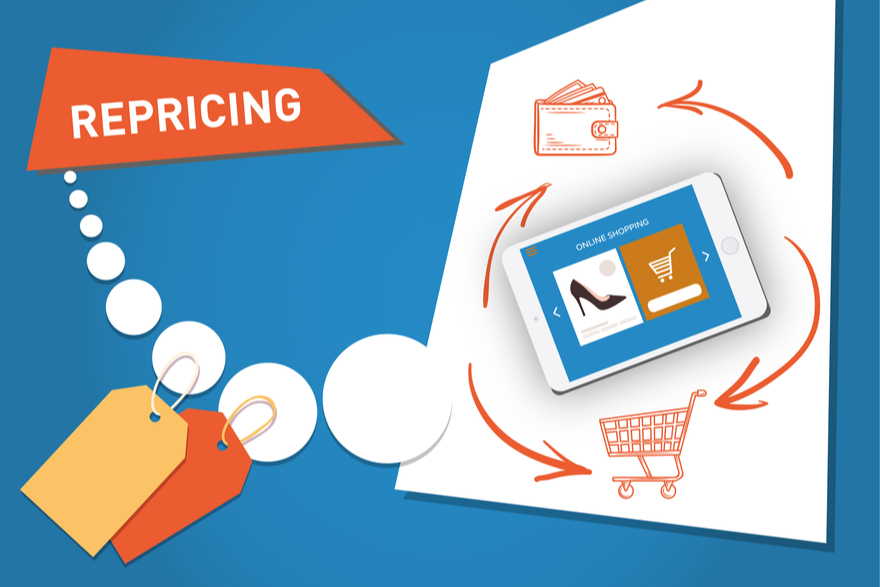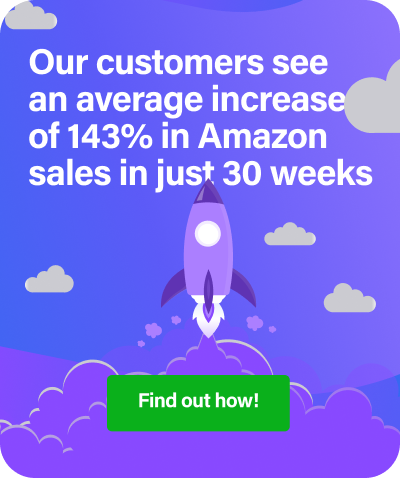At RepricerExpress, we know that pricing rules require thought and nuance but no one rule applies to all situations. If you’re a private label seller, we’ve got five of the best Amazon pricing tactics you can use when setting your pricing rules to ensure the best odds of making conversions and winning a Buy Box.
1. Differentiate Between Margin and Markup
Markup is how much cost you add to the product’s initial cost to arrive at the final selling price. For example, if you paid $5 for a gadget, you could add a $5 markup and the final price would be $10.
Profit margin, on the other hand, is what you’re left with once you subtract what you paid for the product from what the buyer paid for it. Using the same prices as before, the buyer’s price would be $10, what you paid for the product would be $5, and your profit margin would be $5.
The two are not the same, even though we used the same numbers for each example. Remember to treat them as the different terms that they are.
2. Set Prices That’ll Get You On the First Page of Amazon
Most buyers don’t look past the first page on Amazon when researching products, so you should set your pricing rule to get in the top spots. To do that, you’ll need to calculate your floor and ceiling.
To get at your bottom price, work in all fees and costs you’ll need to pay, including FBA fees and commissions, customs, shipping, customer return fees, payment wiring fees, product fees (return shipping, disposal and wire-offs), and any overhead fees (overhead costs divided by the number of products). This is what you’ll need just to break even, although you ideally want to earn more than this.
And for your ceiling price, to land on page one, first search the top several keywords and make a list of the prices of the products that appear on the first page, comparing it to your own. Whatever the highest price is, increase yours by 20-25% or so. For example, if the highest price you saw was $25, make your ceiling $30-35.
3. Make Cents of Number Psychology
There’s a concept called ‘charm pricing’ where having the price end in 99 cents makes the product seem cheaper. It’s essentially the same cost as pricing something a cent higher, but having it end in 99 affects conversions far more positively.
It works because people read numbers from left to right, so pricing something a cent cheaper shifts the buyer’s attention to the first figure(s) and makes it seem less expensive, like $5.99 vs $6.00. The brain registers the 5 far more than 5 and 99/100, making the difference between 5 and 6 seem bigger than 99/100 and 100/100.
4. Price for the Category Your Item Sells In
Some categories, like clothing, allow for a more generous spread in pricing rules, while others, like electronics, have a narrower allowance. Whatever private label products you have, carefully research what the pricing differences are so you don’t price yourself out of a sale.
It’s also important to understand why buyers are looking for items in certain categories. For example, in electronics, buyers focus a lot on a product’s features, while clothing shoppers look at things like style and fabric. You can set your price rules according to what buyers hold to be important.
5. Bundle Expensive Items Separately From Inexpensive Ones
This one has to do with how one item affects the perceived value of the other. Bundling similarly-priced items together tends to result in more conversions than bundling items at opposite ends of the price spectrum. Doing the latter makes people think the cheaper item is overpriced or, worse, the expensive item is cheaper in quality.
Final Thoughts
A bonus 6th tactic would be to use RepricerExpress so it can automate and manage it for you. If you’re selling more than a handful of items each week, then using repricing software makes your job a whole lot easier, stress-free, and more efficient. Remember how we talked about checking out what your first-page competitors set their prices at? A repricer will automatically implement your prices so you always stay within striking range. Sign up now to get started with a free 15-day trial.
Related



